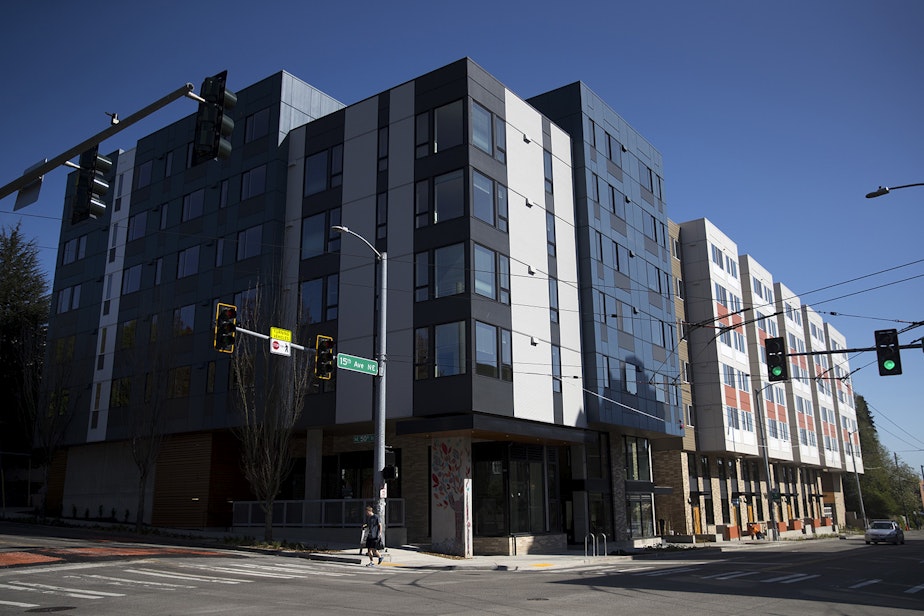Developers are building affordable housing in Seattle – very, very slowly

Three years ago, the city told developers: You can either pay into a fund or build affordable housing units yourselves.
Listener Andrew Chinnici heard about that on KUOW and wanted to know: How is it working out?
Well, Andrew, so far there are permits for just 19 units through this fund.
The goal is for this pot of money to get 6,000 units open by 2025 — so there’s a lot of ground left to cover.
That program is part of the city’s ambitious HALA plan, the Housing Affordability and Livability Agenda. This massive plan aims to have 20,000 affordable units built by 2025. Money from voter levies, federal and state financing and nonprofit groups have paid for another 3,200 units that have come on line since 2015, with 4,400 more in development.
As Seattle housing prices have soared, lower income residents have been priced out of the city. Some squeeze into ever tinier apartments, some move away and some become homeless. Politicians have vowed to add more affordable housing — but production isn’t coming close to meeting demand.
Emily Alvarado, who manages policy and equitable development for the city’s Office of Housing, said designing new buildings and obtaining construction permits is a time-consuming process.
And the mandatory part of HALA only really got going last year.
Five projects had received construction permits under the mandatory plan by the end of February. And those developers are mostly opting to build rather than pay: the 19 new units, along with $256,000 to the Office of Housing.
Currently, only six neighborhoods have the plan in place, but by the end of this year it will expand citywide.
Also, let's not confuse this new, mandatory program with a voluntary one Seattle has had since 2001. “Incentive zoning” generated $125 million through the end of last year by allowing developers to build more in exchange for housing payments or units. That money translated to 3,646 units of affordable housing — some of which are still under construction.
In most cases, “affordable” means that units are restricted for people earning 60 percent of less of the area median income.
It’s pretty clear that the pace of building doesn’t match the need. A draft report last October from the King County Housing Affordability Task Force said 244,000 new homes would be needed countywide by 2040 to ease the affordability crisis.
When we spoke with Andrew, the question-asker, he said that he worried Seattle would build ghettos with this money. For instance, he said, St. Louis, Missouri, his hometown, has stark divisions between rich and poor neighborhoods.
“I want a healthy city,” he said. “I want a diverse city. I want a city that I can grow up and grow old in.”
Seattle is trying to spread investments in different neighborhoods, said Alvarado, with the city housing office. “We’re looking at all parts of the city,” she said.
A map of past investments bears that out.
One building with 245 units will be at the light rail stop off Roosevelt Way in Ravenna. Another with 114 units will be at 24th and Union in the Central District. Chinatown-International District and Downtown have the most units built with incentive zoning dollars.
In the past, Seattle has distributed these dollars “pretty well across the city,” said Howard Greenwich, who tracks equity and land use for the nonprofit Puget Sound Sage.
Seattle is different than other cities — like Los Angeles, Detroit or St. Louis — when it comes to the need for affordable housing.
“Even in the parts of the city with highest concentrations of poverty, well-to-do households are only blocks away, whether on the water or on a ridge,” Greenwich said.

